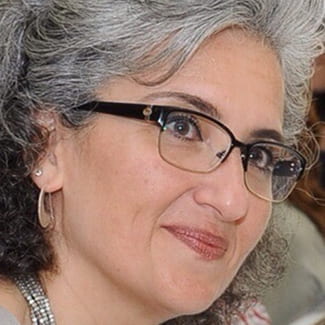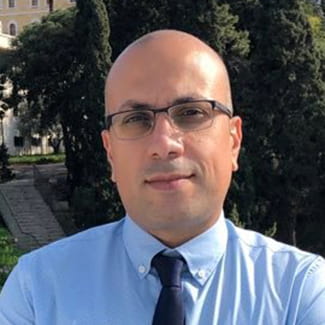Unchartered territory:
Educators create new pathways
Early in the fall semester, within my health communication theory course, in a class focused on communication for healthcare organizations, I asked students to book access to campus for a kind of ‘treasure hunt.’ This activity aimed to look for communication outputs and materials (e.g., banners, posters, printouts) on campus that are utilized by organizations such as AUB and AUBMC to influence health-related behaviors. This event provided a much-appreciated opportunity for first-year students to meet each other, as they did not have any occasion to do so. For students not in Lebanon, I live streamed and recorded this event via Webex, so that they could feel part of the group. This was just one activity of the many that I try to do to engage my students. My classes are usually based on discussions of the materials and readings students prepare at home beforehand. In my health communication theory course I also use Flipgrid, a platform that creates video questions and responses using a TikTok style interface.”
Marco Bardus, Assistant Professor, Department of Health Promotion and Community Health
“As nervous as I was with switching to the online environment, I managed to keep the focus on course materials. I made sure that I had recordings of class sessions knowing that some students have an unreliable internet connection. I also increased the frequency of checking for student comprehension and engagement during my two-and-a-half hour seminar. I made myself available via group WhatsApp calls, and I followed up with students individually if I noticed that they were less interactive in class. Effective teaching whether online or in person is about connecting with your students in order to understand them as learners so that you can provide the support they need.”
Rima Karami Akkary, Associate Professor, Department of Education, Director of the TAMAM Project
“In addition to the Moodle-posted recorded lectures, a portal was created for students to post questions and concerns which are addressed in regularly scheduled live sessions where students also report on their course progress
and discuss the merits and challenges of the learning environment. Regularly scheduled hands-on sessions give students the opportunity to recap basic principles and apply them to practical problem solving. These sessions can include interactive activities for projects, assignments, and even examinations. During the summer semester several undergraduate students participated in online internships. In a workshop-like format applied design ideas were generated that are now the basis of students’ final year projects for this academic year. We have been able to enhance undergraduate research activities through regular online sessions that encourage students to think about how the
material can be applied to research opportunities
as a way to earn extra credit for their respective courses in electromagnetics and radio-frequency systems.”
Joseph Costantine, Associate Professor, Department of Electrical and Computing Engineering


